
Although soil is an important foundation of plant care, it can be a pain sometimes.
Whether it’s making a mess of your floors or attracting pests and bacteria into your home, there are certainly a lot of problems that would be solved without soil.
But how can you grow plants without soil?
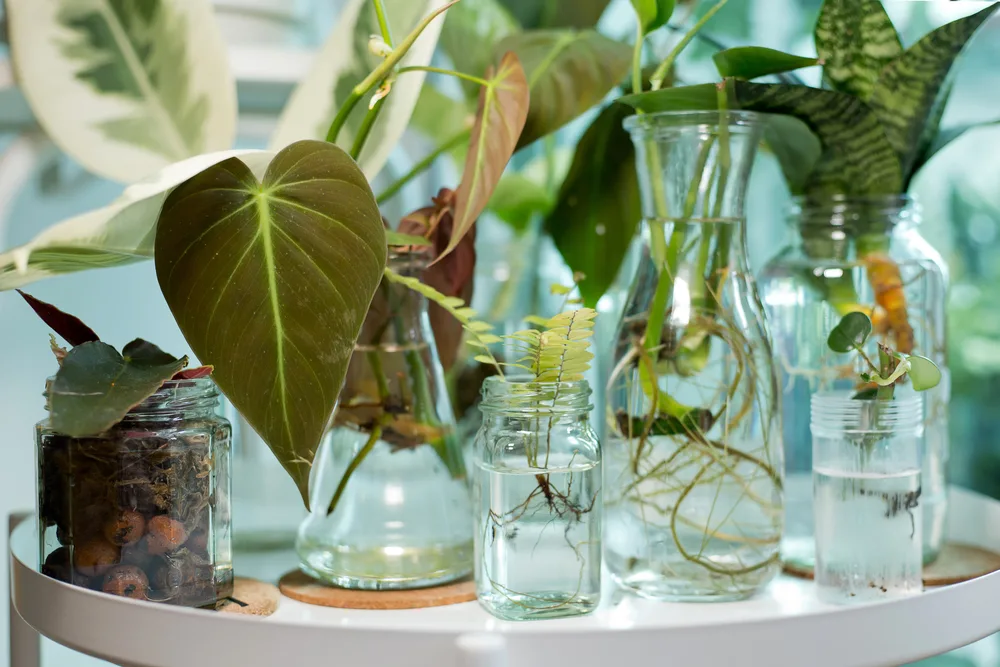
If you’ve ever tried propagating, or taken a look at hydroponic systems, you’ll know some plants don’t actually need soil to grow. They’re happy in water alone. Many plants may only last a few seasons grown in this way, but others can last several years with the right care.
By snipping off a cutting from one of your existing plants and popping it in a glass filled only with water and a touch of fertilizer, you can grow new and long-lasting plants at absolutely no cost. Plus, you’ll never have to clean up the mess from a knocked-over pot or worry about repotting again.
Choose one of these seven plants for a long-lasting water-based indoor garden. They don’t require specialized hydroponic systems with filters or specialized nutrients – just a glass, a bright spot, and the right water.
1. Pothos
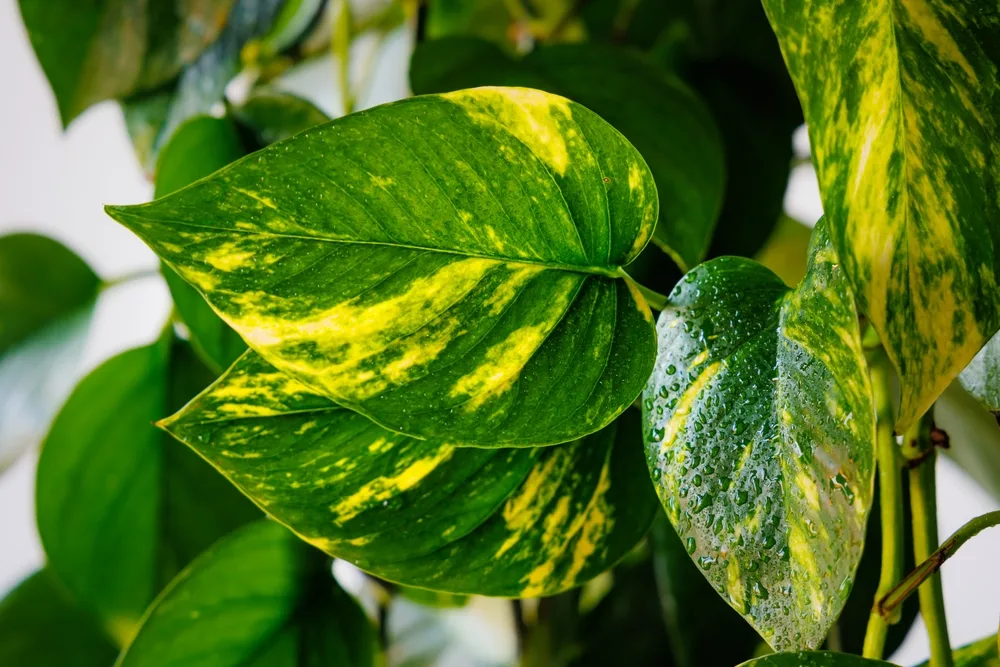
One of the most popular houseplants around, the Pothos (Epipremnum aureum) is a great candidate for water growth.
Any plant parent who has tried propagating these leafy vines will know why. The stems have various nodes that can produce roots when exposed to moisture.
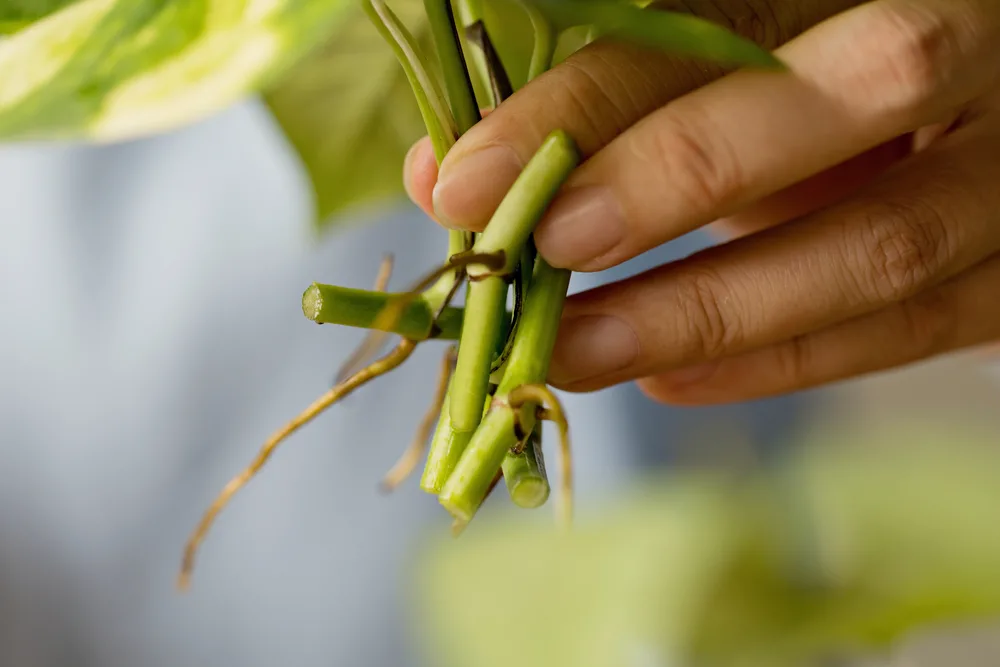
The roots develop quickly in water and can sustain the plant for long periods – especially with several leaves on a vine.
Their ease of growth in water isn’t their only benefit. These cascading stems make wonderful décor features, looking even better when paired with a stylish propagation station. They are also not fussy about their lighting conditions, handling moderate or low light well.
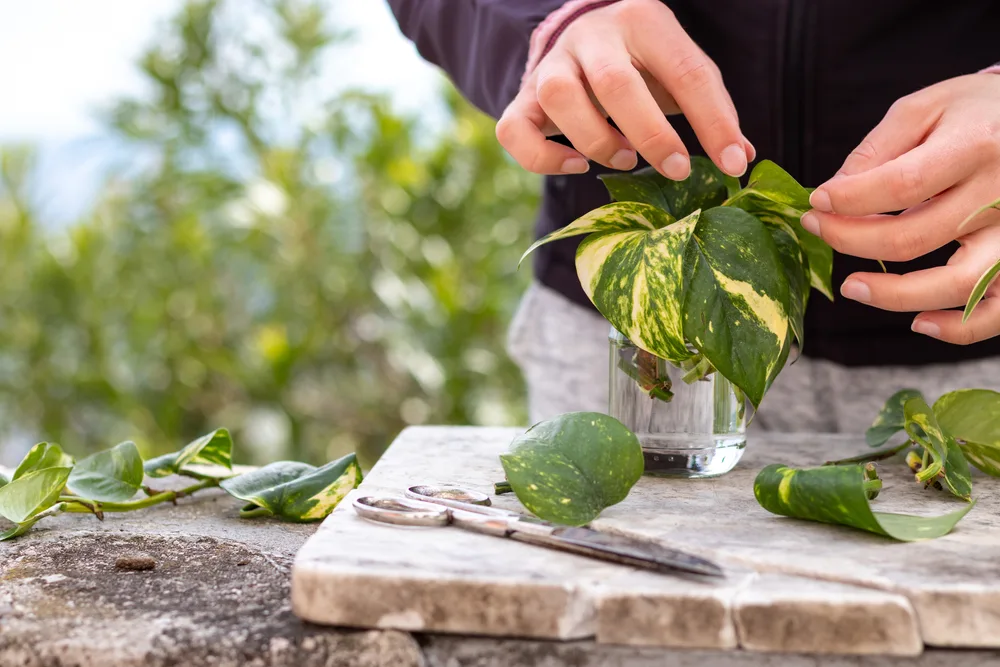
Growing pothos in water when you already have an existing plant couldn’t be easier. Simply trim at least four inches off one of the longer, healthier vines just below a node. The longer the cutting, the better the chances of long-term growth as the plant will have more foliage to sustain itself.
Remove all the leaves from the bottom half of the cutting and rest the stem inside a glass filled with clean, filtered water. Plant several cuttings in the same glass for a fuller look.
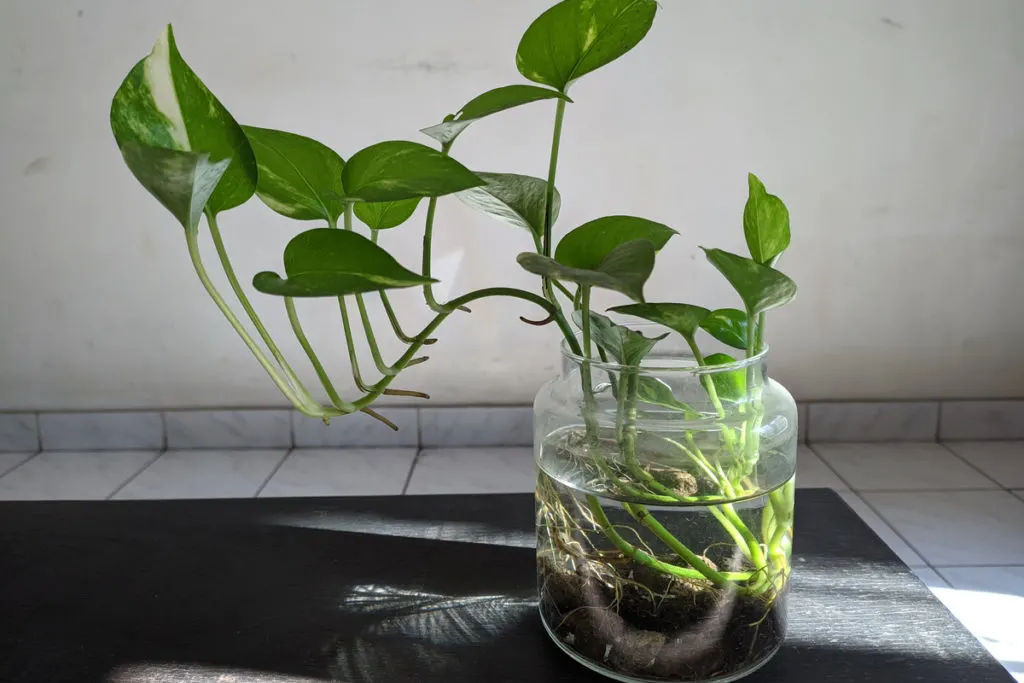
Continue to top up the water as it evaporates to keep it above the root line. Once the roots have grown several inches long, pop a few drops of liquid houseplant fertilizer into the water to replace the nutrients that would have been obtained from the soil.
Continue to feed every 4-6 weeks, replacing the water completely when you do. Clean the glass every couple of months or when you notice algae or bacterial growth.
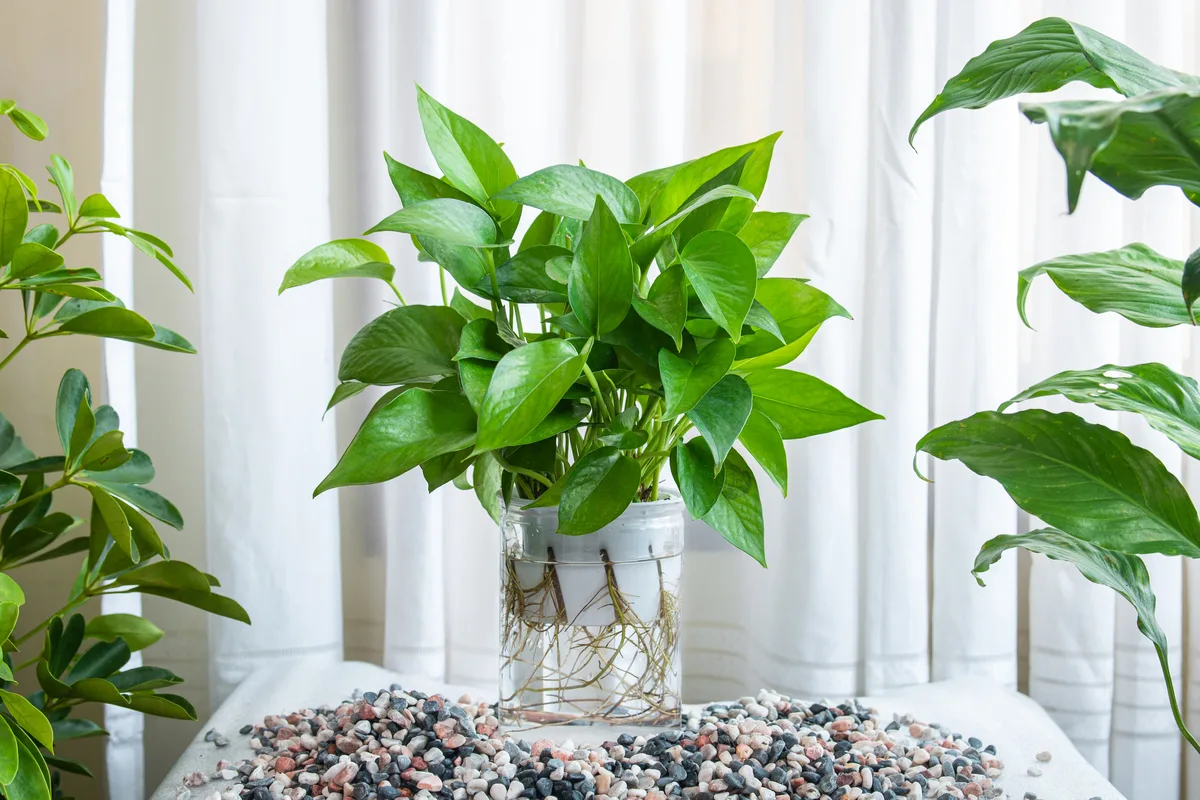
2. Philodendron
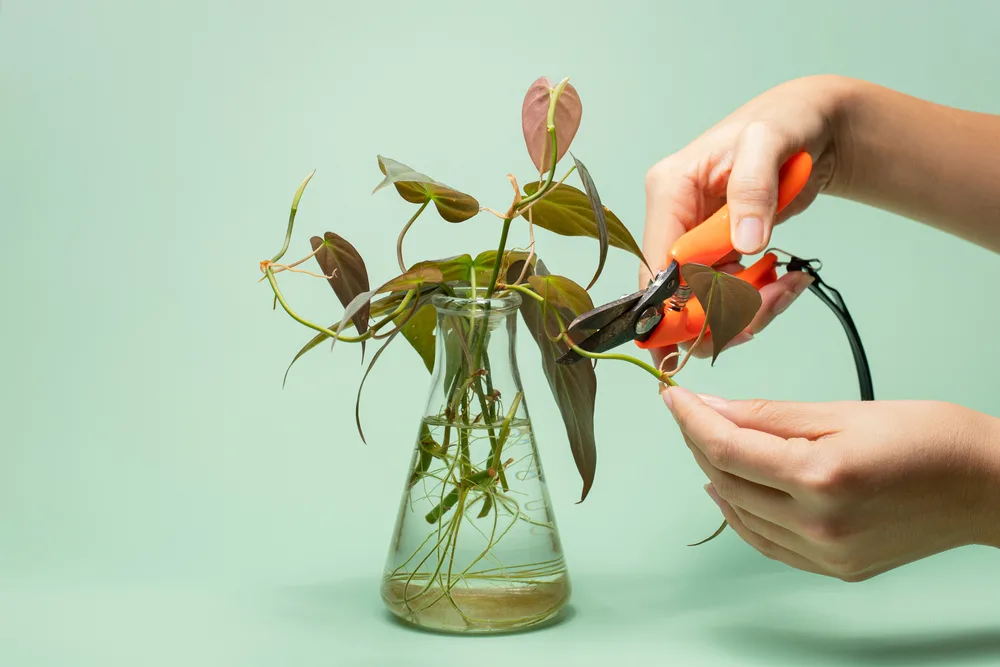
Often confused with the Pothos, climbing Philodendrons like Philodendron hederaceum are also easy to grow in water.
With a similar growth habit and remarkable ease of care, even new gardeners with absolutely no experience won’t have trouble growing this plant in water.
Vine Philodendrons are almost impossible to kill and will grow just about anywhere. They love humid environments (ideal for water growth) and can handle a wide range of lighting conditions without any signs of struggle. They root in water just as easily as the Pothos and will produce a thriving plant in no time.
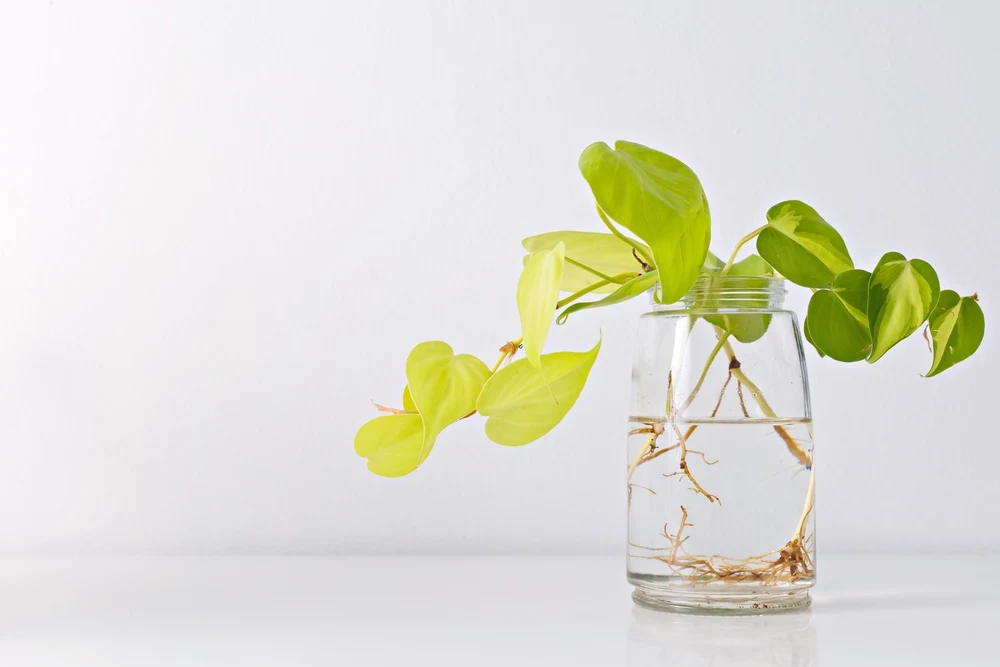
To root in water, follow the same steps as with the Pothos. Choose vines with large, healthy leaves for better photosynthesis to ensure quick growth. If you’re taking cuttings from an older plant, wipe down the leaves before planting to remove any collected dust.
Keep up the same care, moving the plants to a larger glass or trimming when the stems become too long for the existing container.
3. English Ivy
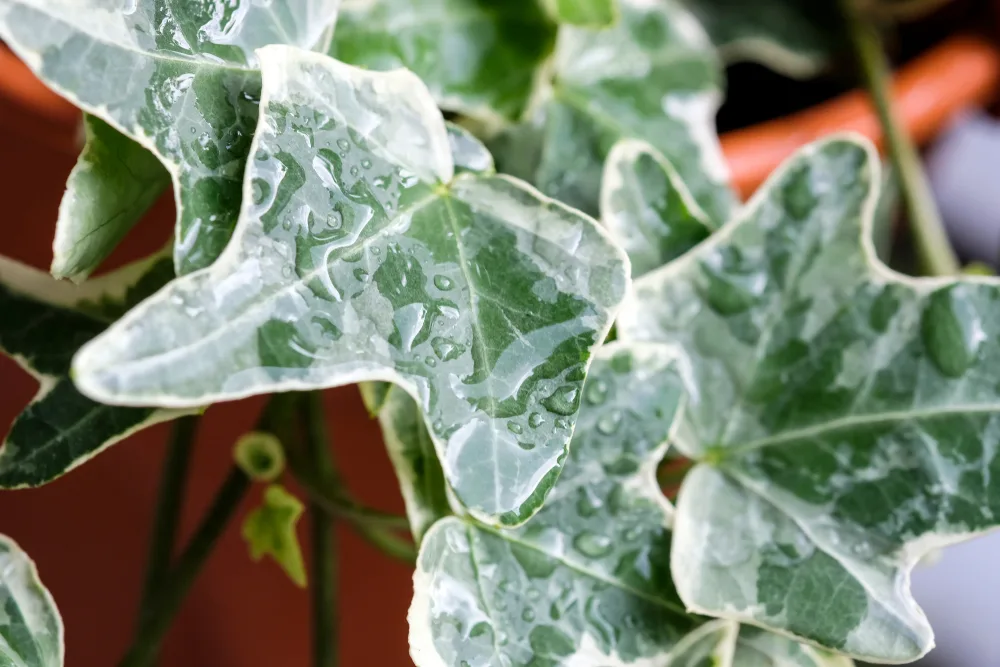
Experienced gardeners around the world shudder when they hear the name English Ivy. When planted outdoors, these vines can be incredibly invasive, quickly taking over areas and suffocating other plants.
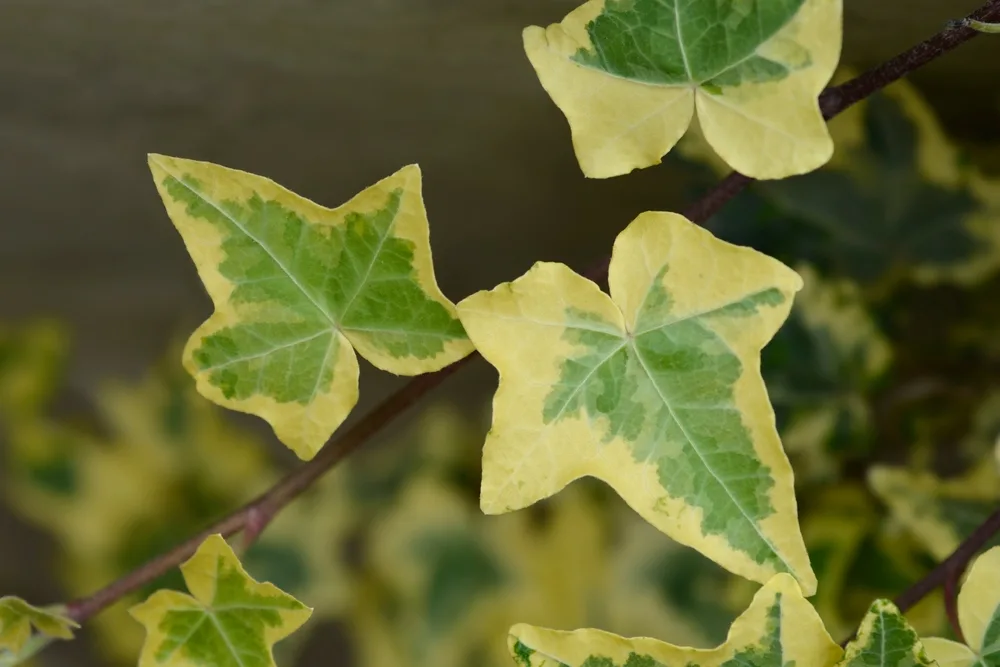
However, when they’re confined to a glass and kept indoors, you can enjoy their lush leafy beauty without the stress of managing their spread.
Hedera helix is a prolific grower with long, impressive vines and glossy foliage. As they are invasive, it may not be easy to find one in your local nursery, but they will happily root in water from cuttings of existing plants.
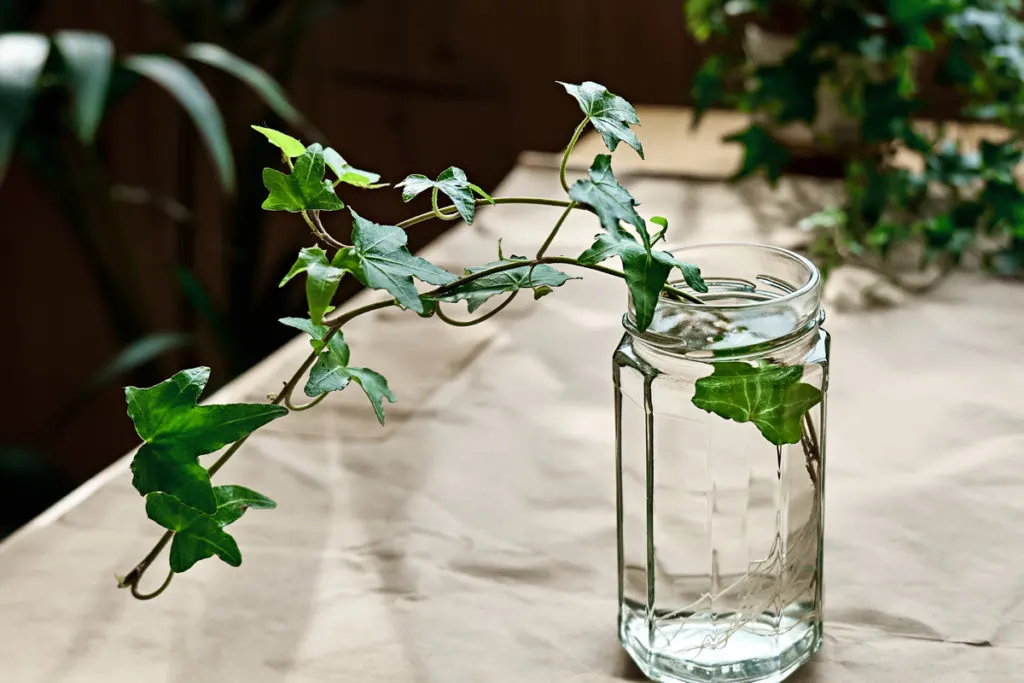
Make sure you choose a type suitable for indoor growing for the best chances of long-term growth. If you’re unsure, take a look at the label or choose ones with smaller foliage and stems to be safe.
When taking cuttings, the stem shouldn’t be too old and woody or too young with vulnerable new growth. Slightly woody stems that are still easy to manipulate and have lots of foliage are ideal.
Trim the stem just below a node and remove the bottom few sets of leaves, ensuring you leave enough foliage on the top half of the cutting to maintain growth.
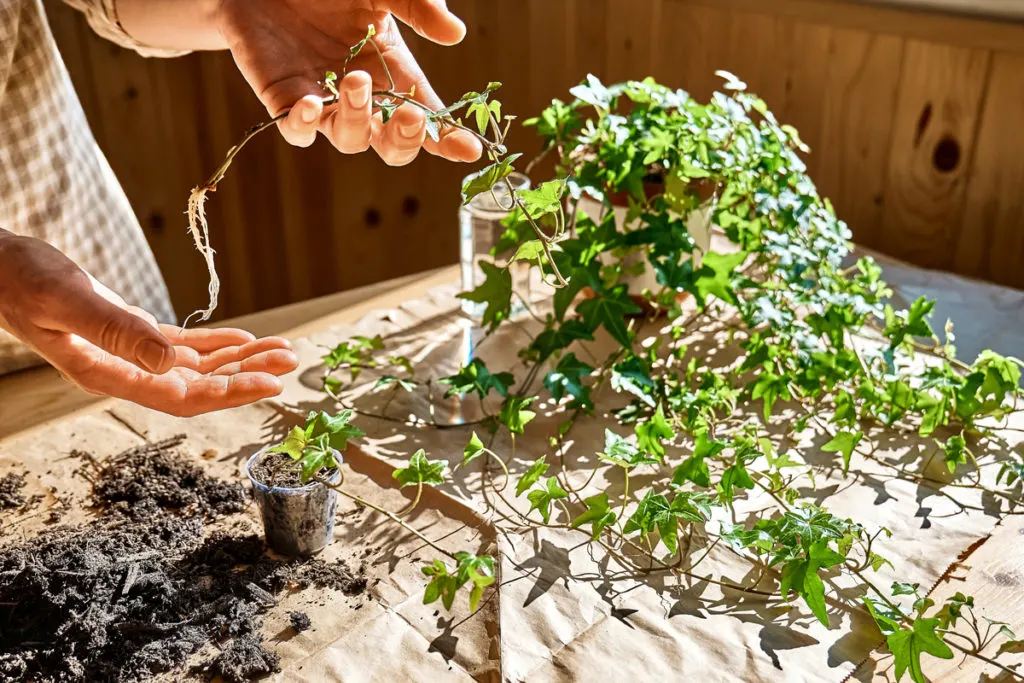
Like the other plants on this list, it’s important to keep up the water level and only use filtered or bottled water for long-term growth.
Feed often in spring and summer with a regular houseplant fertilizer. Don’t use too much at one time or you risk burning the roots. A few drops will be enough for the slow growth the plant experiences indoors.
4. Chinese Evergreen
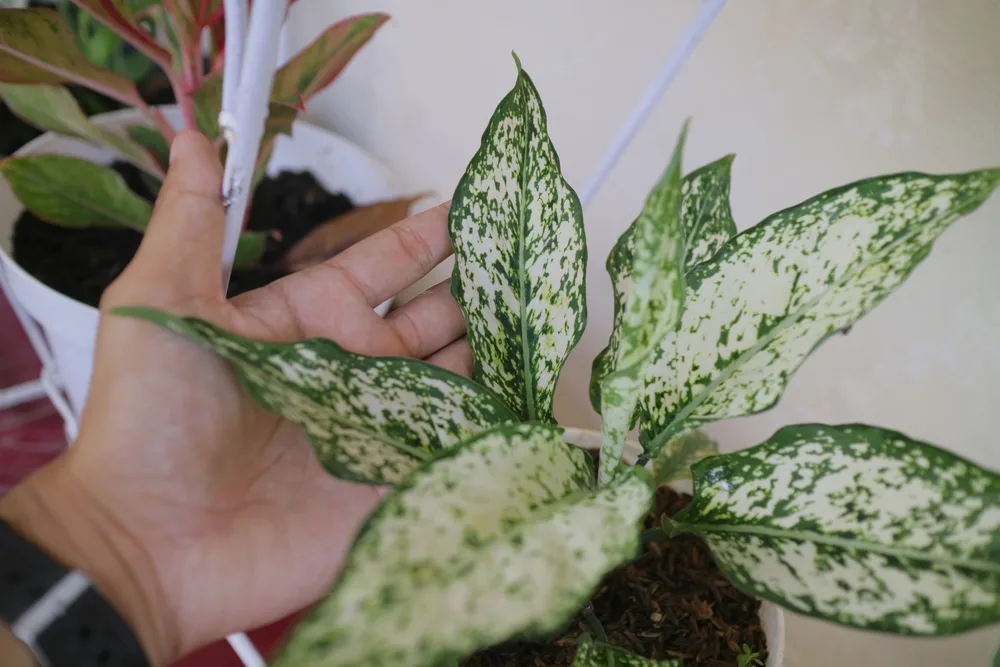
Aglaonemas are the perfect plants for foliage enthusiasts. The wide variety in leaf shape, color, and overall size is so impressive, it’s hard not to want to collect them all.
Adding to their allure is their ability to grow in water long-term, thanks to their thick stems and large leaves.
Start by choosing your favorite variety or cultivar to take a cutting from. With a large enough container, you can also place two different types together for an interesting contrasting feature.
It’s best to take cuttings from shoots rather than planting a whole plant in water as roots used to growing in soil do not respond well to being moved into water.
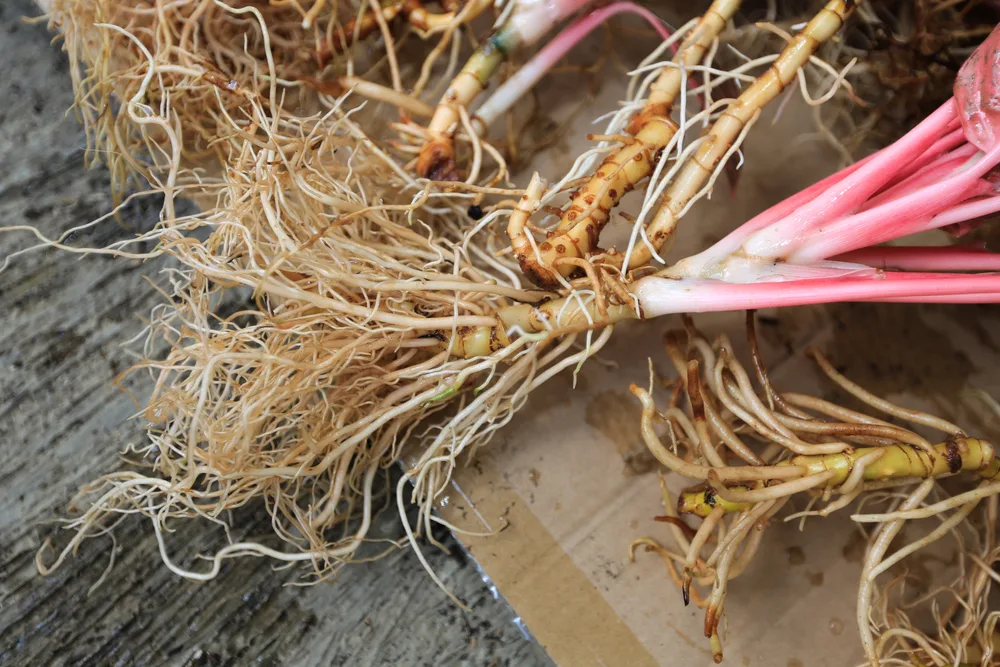
Choose a shoot with around five developed leaves emerging from the base of the plant. You can also cut existing older stems, but this may ruin the appearance of the parent plant.
The cutting should be around six inches long with plenty of foliage. Make sure you use clean, disinfected shears or a sharp knife for the thicker stems to avoid spreading disease.
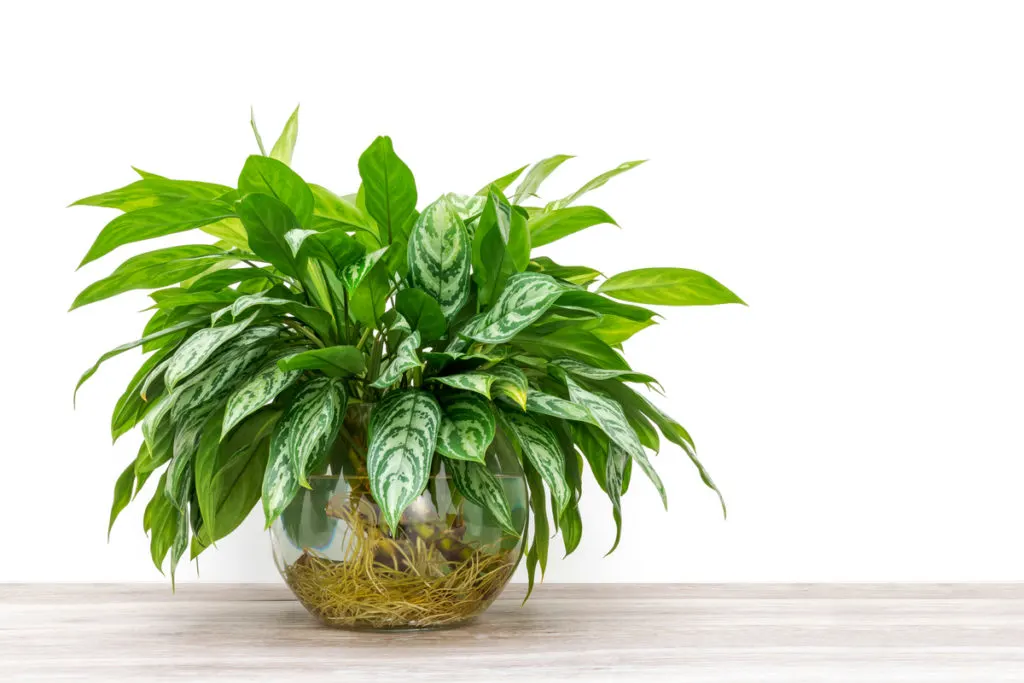
Pop the stem into a glass of water and place it in a spot with bright indirect light. These plants tolerate a bit of neglect and won’t mind lower lighting conditions in the right temperatures.
Once the roots have developed, add a houseplant fertilizer to the water once every two months during the growing season to sustain the plant.
5. Spiderwort
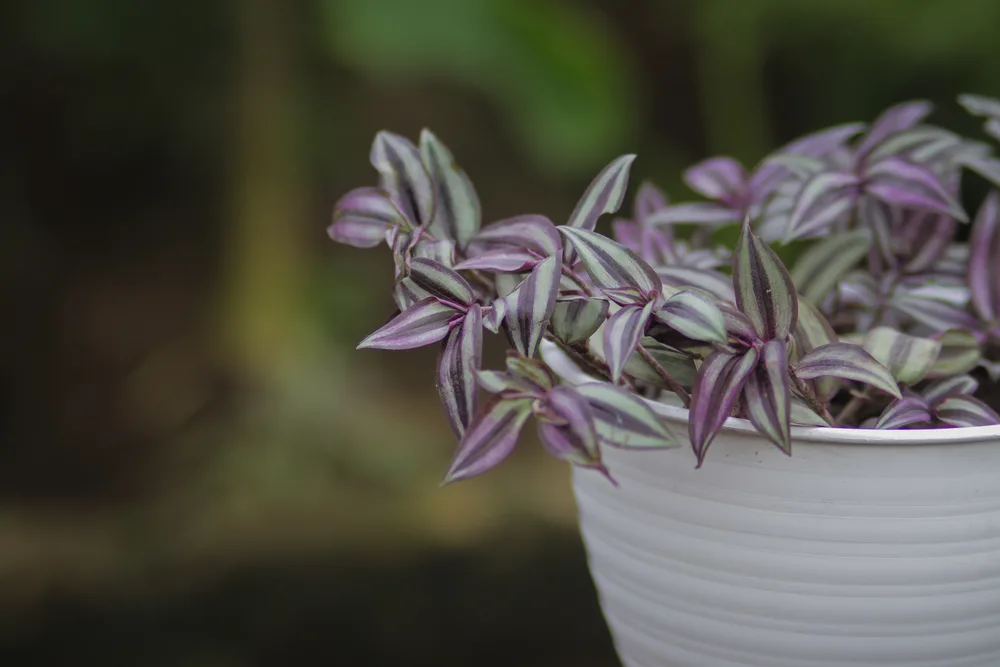
You may know the Spiderwort as Inch Plant, Wandering Dude, or Tradescantia.
Although there are many different types, the most popular Spiderworts have a purple-cream hue and interesting stripes unlike any other houseplant. They also root well in water and are great colorful options for long-term growth.
Like other trailing plants, Tradescantia has various nodes along the stems where leaves and roots can develop. Cut as many stems as you would like to grow just below one of these nodes. Remove the leaves from the bottom section of the stem before planting, as they can rot and attract disease if left to sit in water.
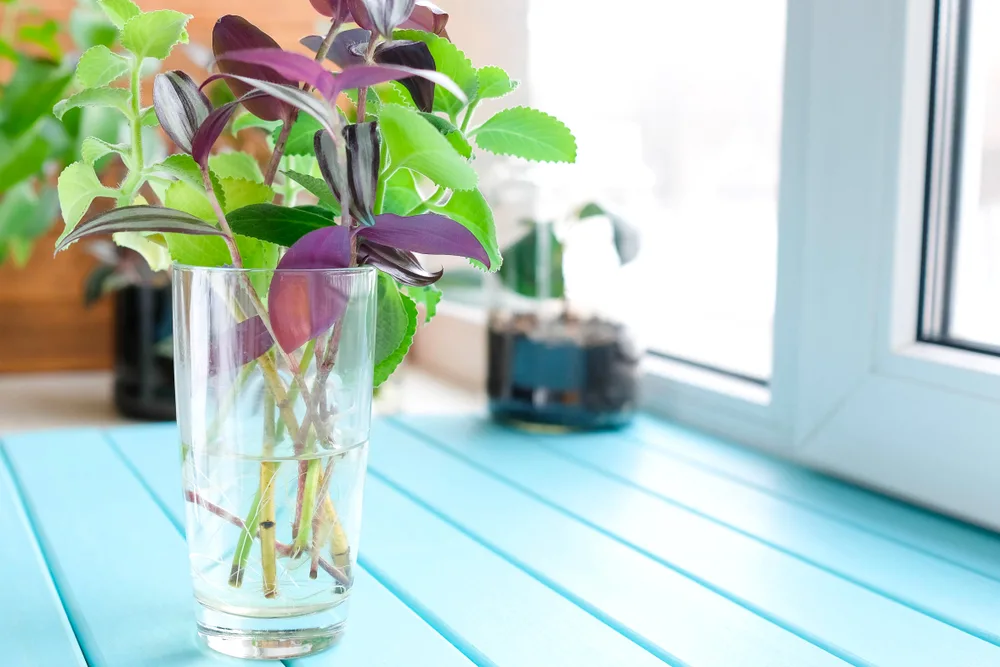
Place the stems into a tall glass filled with room temperature filtered water. Leave the glass in a bright spot with lots of indirect sunlight. Avoid any direct sunlight, especially close to windows, as this can scorch the leaves.
After a few weeks, you should notice delicate roots starting to develop. Wait until they are several inches long before adding fertilizer to the water. A balanced houseplant fertilizer or liquid fertilizer high in nitrogen and potassium is best to promote strong leaf and root growth.
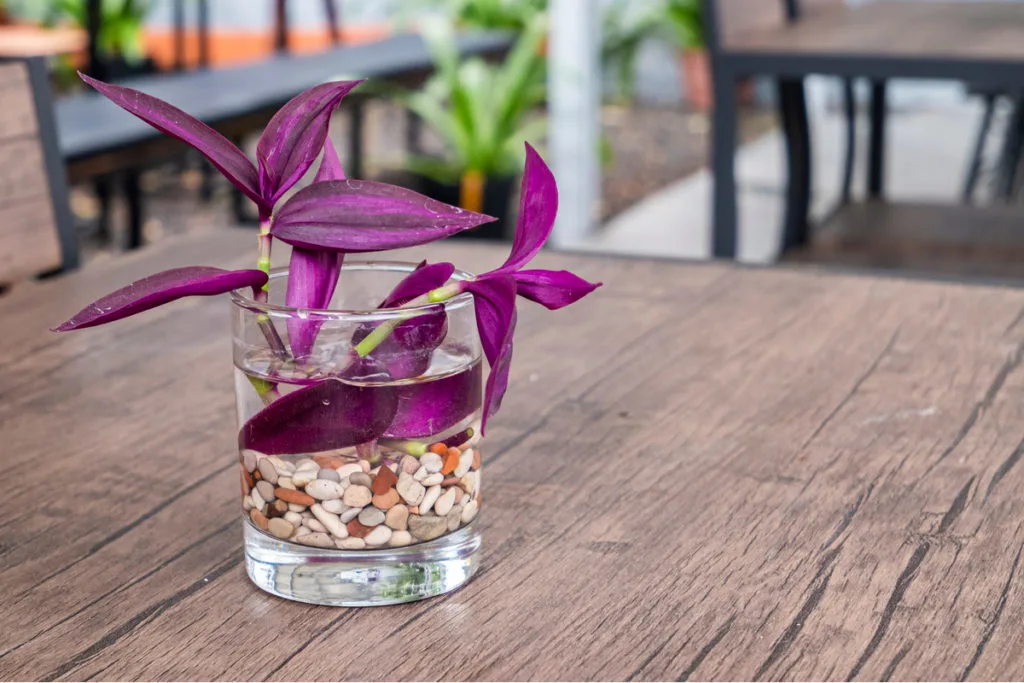
Continue topping up the water as it evaporates and completely replace it every few weeks to keep the plants healthy.
6. Spider Plant
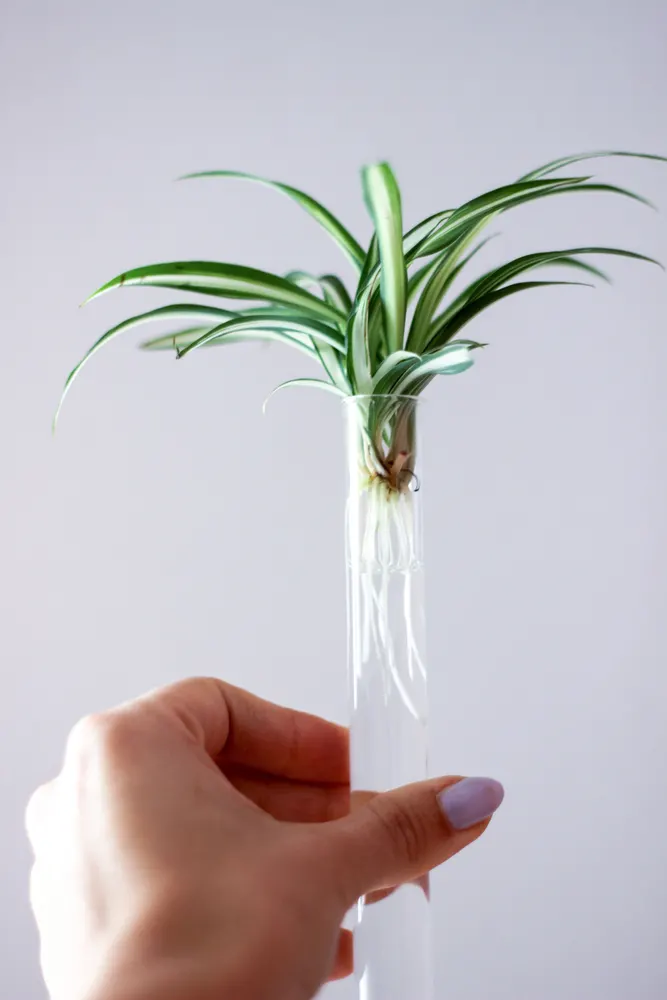
Spider Plants (Chlorophytum comosum) are one of the easiest houseplants to propagate because they do most of the work for you. Here’s our guide for propagating spider plants, anyway.
These plants produce plantlets (or spiderettes) on long, cascading stems that can simply be snipped off the plant and popped in a glass of water to grow roots.
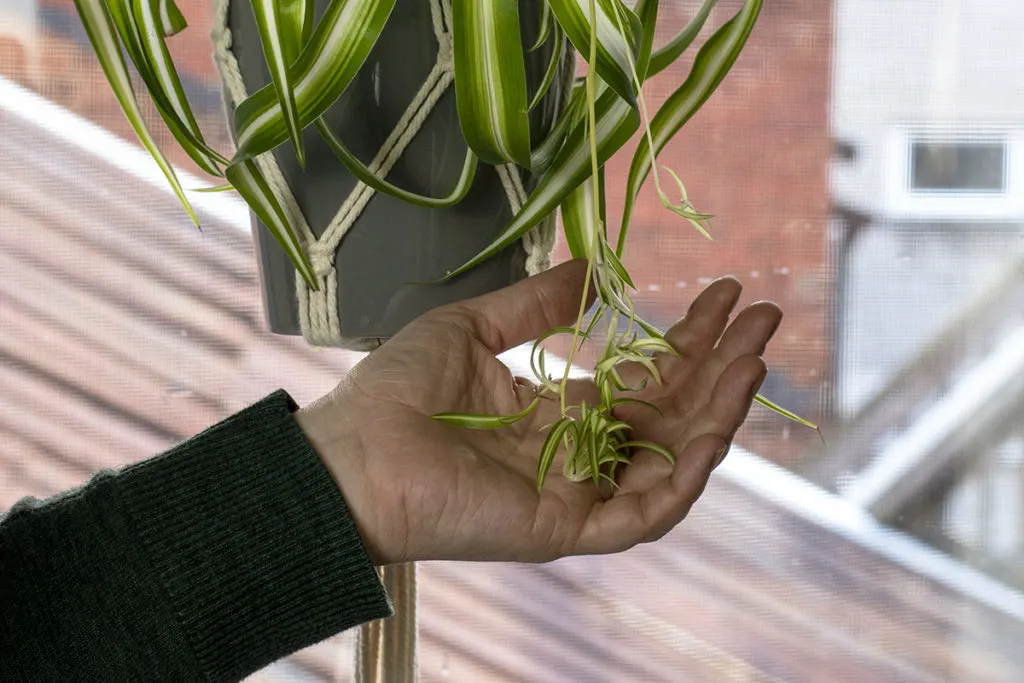
And, these plantlets can also stick around in the water for quite a while, as long as they are given the right nutrients.
When your Spider Plant has produced a few plantlets that are large enough and have preferably started developing roots, cut them off the stem at the base.
Alternatively, you can cut the entire stem off the plant, but that limits the chance of another plantlet developing. Don’t cut too close to the base of the plantlet to avoid damaging the root system.
Place each baby in its own jar with the base resting in water. Use a jar with a thinned neck to hold the plant in place, or cover a regular jar with plastic wrap and make a hole for the roots to rest in.
As the water requires continual upkeep for long-term growth, it’s best to have a specialized jar you can easily take the plant in and out of.
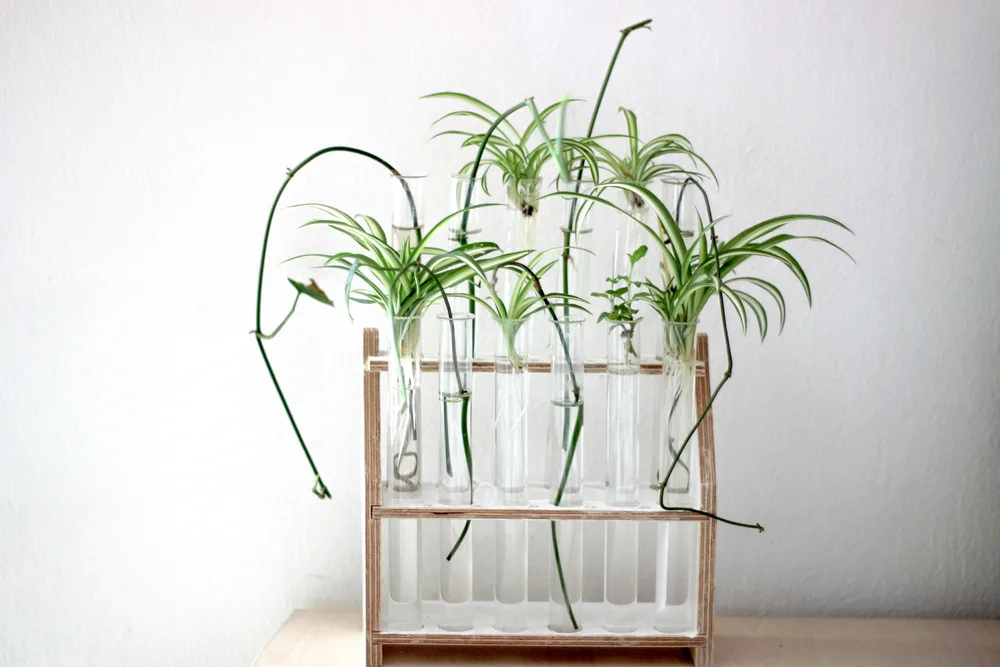
Once the roots grow several inches long, you can begin feeding with a balanced liquid fertilizer. Make sure to dilute the fertilizer heavily so it does not burn the roots of the new plant.
Continually top up the water above the base, but never leave the foliage sitting in water. If it starts to outgrow the jar or become crowded, move it to a larger jar.
7. Dumbcane
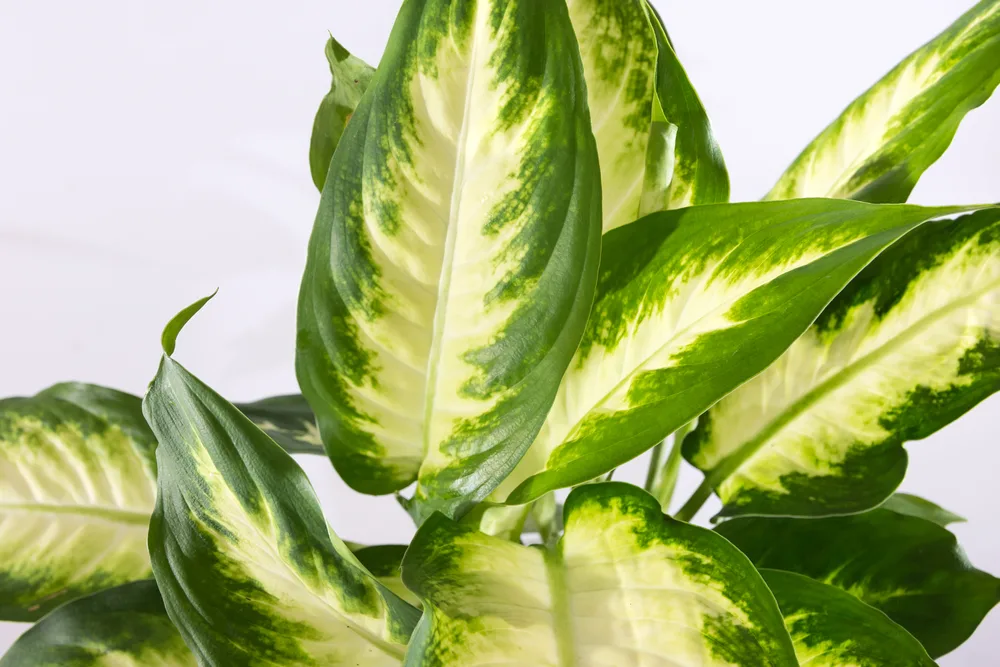
Similar in looks to Aglaonemas, Dumbcanes (Dieffenbachia) are large, impressive plants typically grown indoors.
Their thick stems and tolerance of a wide range of lighting conditions makes them incredibly easy to grow, even in water alone.
Remove a six-inch-long piece of stem from the parent plant. To maintain the neat look of the original plant, it’s best to remove branching stems rather than central ones. Make sure you cut the stem with a sharp, clean knife to avoid damage. You can also cut the stems at a slight angle to prevent the base from resting on the bottom of the glass.
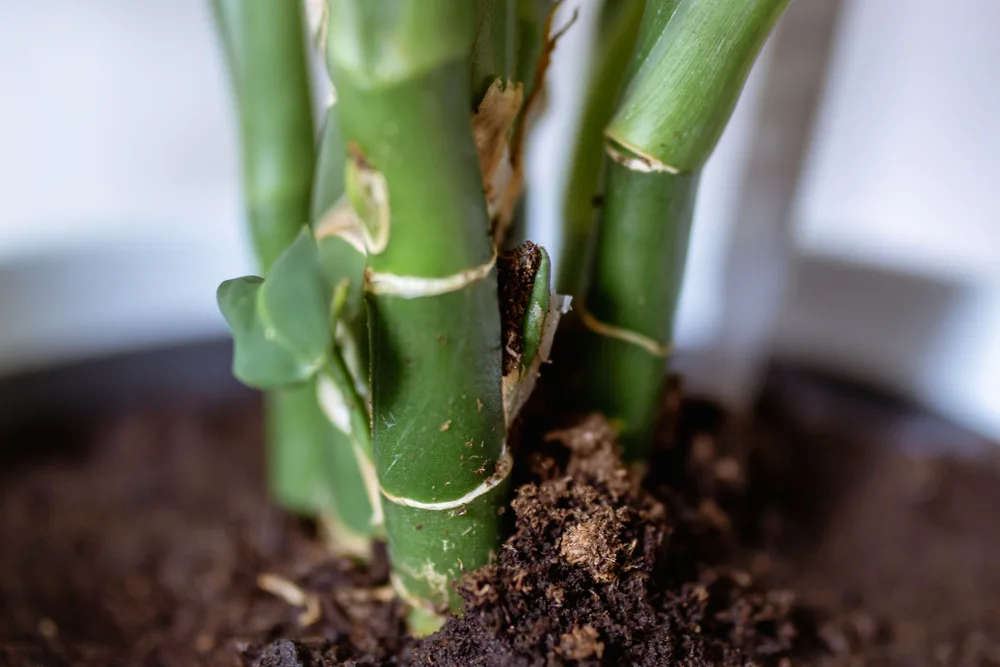
If there are any leaves attached to the bottom section of the stem, you can remove them. If they will not sit in the water, it’s better for them to remain on the plant. Rest the stems inside a large glass filled with filtered or bottled water.
You should see roots start to form on the bottom or sides of the cutting within a few weeks, depending on which stems you chose.
These plants are considered heavy feeders and will need added fertilizer frequently to grow in water long-term. Add a balanced liquid fertilizer to the water at least once a month according to packaging instructions. Be sure not to overfertilize as this can burn the roots and stunt growth.
Growing houseplants in water is an ideal example of the phrase ‘no garden, no problem’.
Whether you’re an urban gardener strapped for space, or an experienced plant parent looking for a new project, these plants are bound to be perfect for you.

Get the famous Rural Sprout newsletter delivered to your inbox.
Including Sunday ramblings from our editor, Tracey, as well as “What’s Up Wednesday” our roundup of what’s in season and new article updates and alerts.

